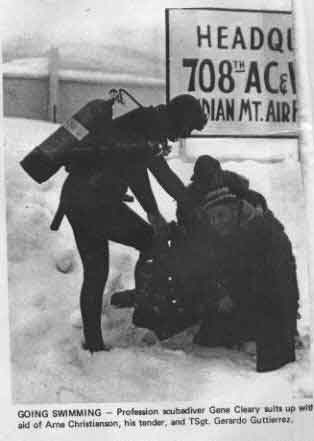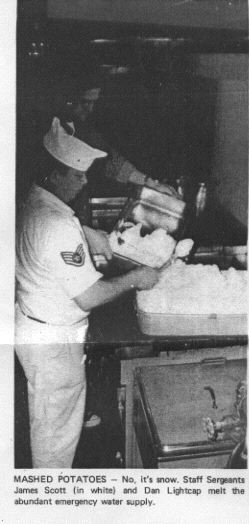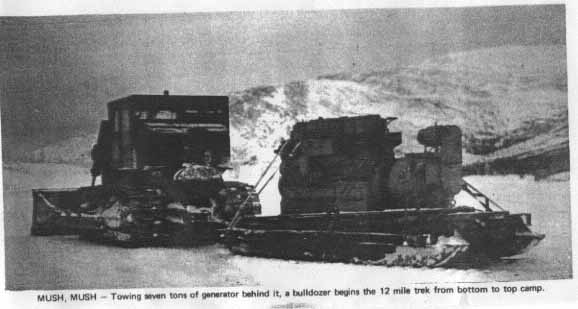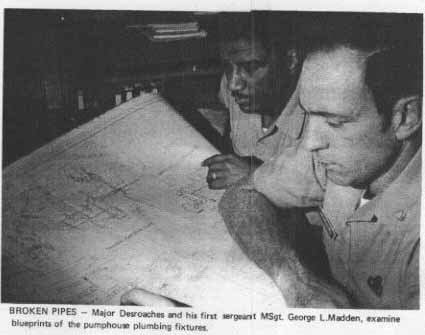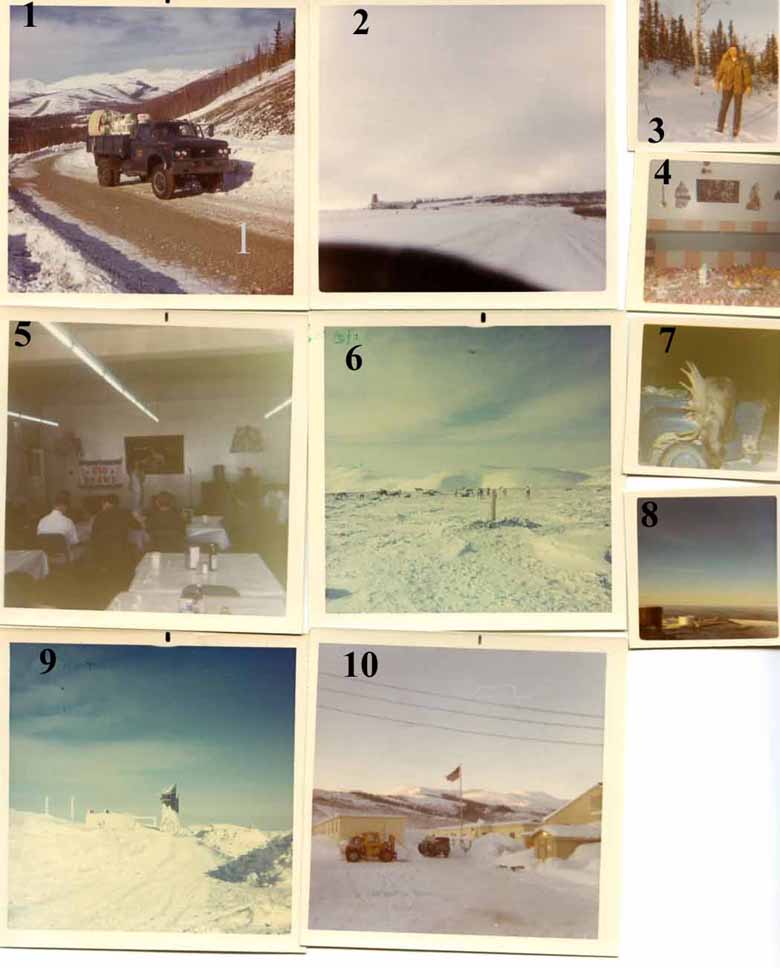
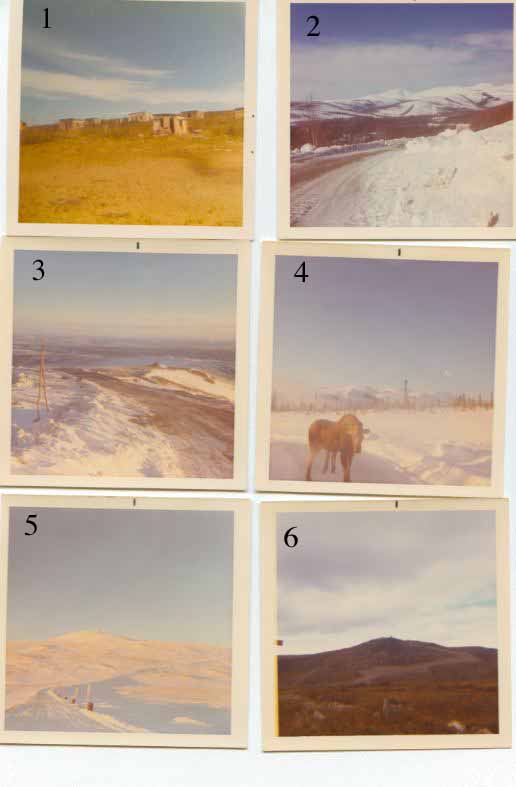
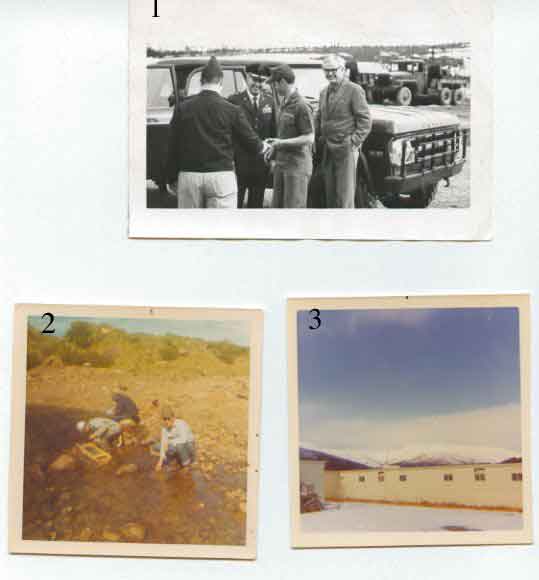
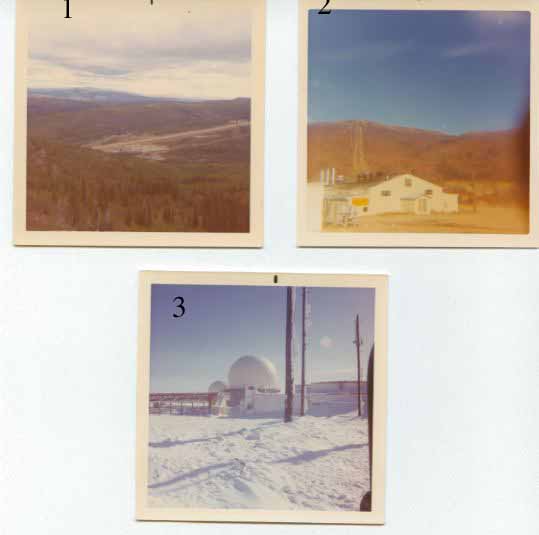
I was there 70-71. That was the year we lost a generator at top
camp, water and the sewage system froze up. Poop in a can what
was done. My job as driver was to get the mail, diesel fuel ,
and people to top camp. One time I ran into a white out at 6 mile
couldn't go anywhere for 4 hours before it broke. The dozer had
to get me and my truck full of people out. Some of my stories
could go on forever. Sure was glad to see Wieny bird bring in
the mail, and the chopper that came when it was my turn to leave.
figmo.
 |
 |
 |
 |
The old adage that "misery comes in threes" gained
some credence recently at Indian Mountain Air Force Station when
the forces of nature began a chain reaction which beset station
personnel with a triplet of major problems.
Indian Mountain, one of Alaskan Air Command's remote radar stations,
is located in the desolate Alaskan interior about 165 miles northwest
of Fairbanks. It is home for the 708th Aircraft Control and Warning
Squadron, part of the North American Air Defense Command's web
of early warning stations.
The station is divided into two areas: "top camp," atop
the 4,200 foot peak consists of three radar towers, troop housing,
an operations building and a standby power plant. "Bottom
camp," about 12 miles away, provides electricity and supplies.
The station's gravel air strip is also there.
Between the two camps, about a quarter-mile down the mountain,
stands top camp's only water supply - a 1.2 million gallon tank
and pump house. This is where their problems began.
Top camp became isolated because of extremely high winds and blowing
snow. While the men were "imprisoned" by the weather,
high winds blew open a door to the pump house.
With a wind-chill factor approaching 100 degrees below zero, the
pump house's heat was quickly lost. Everything inside was soon
frozen, and top camp's water supply was completely shut off.
The second major problem began a few hours later. Station engineers
detected trouble somewhere along the power line running up from
bottom camp. Unable to withstand outside weather to investigate
the source of either problem, the station was forced to switch
to emergency power.
The following day, with no water, top camp's two boilers atomatically
shut down. Again emergency procedures were begun to overcome the
problem.
Snow became the only water source. Using what water could be obtained
from melted snow, the boilers were manually pumped. This didn't
solve the heating problem. The men at top camp were soon wearing
their special Arctic weather gear inside.
After nearly a week, the weather cleared enough to allow investigation
of the water supply problem. The next day a portable heater was
installed in the pumphouse, and the frozen pipes and valves were
thawed by evening.
But another problem had arisen. One of four 7-ton diesel generators
providing emergency power broke down, threatening top camp with
a complete power loss. Top camp's manning was reduced to a skeleton
force. Power consumption was cut to a bare minimum.
Severe weather again returned and brought still more problems.
The portable heater in the pump house failed. All the plumbing
fixtures were frozen again.
Informed of the rapidly deteriorating situation at Indian Mountain,
Col. Albert M. Doherty, commander of the 21st Civil Engineering
Squadron at Elmendorf AFB, alerted technicians from one of his
mobile engineering teams.
Several attemps to aid the men were unsuccessful. Engineers aboard
a C-124 Globemaster were unable to land on the gravel strip.
Several days later three plumbing specialists, a lineman and their
hand tools were flown into the station aboard an H-3 from the
5040th Helicopter Squadron. The weather cleared enough to allow
inspection of the power lines and repairs were made on two loose
connections. Power returned to normal at the summit.
Investigation of the pump house revealed another problem to overcome.
Although every fitting inside the shelter had frozen, the waterline
leading from the tank was still open. An attempt to replace the
frozen and cracked shut-off valve inside the pump house would
leave the tank free to dump top camp's only water supply.
The plumbers agreed the solution would be to turn off electicity
to the outside pipe heater and let part of the lead-on pipe to
freeze to form an ice block. Nature again interfered. Before the
water was able to freeze again, the temperature rose. The water
wouldn't freeze.
This development left only one solution - plug the pipe from inside
the tank. And so a unique event took place at the isolated station.
A professional scubadiver was helicoptered in from Anchorage.
Suited up in his gear, he dived into the tank and plugged the
pipe.
The water is continually circulated and slightly heated so it
won't freeze.
With the tank plugged, the plumbers repaired and replaced the
essential pumps, pipes and valves. The divers jumped back into
the tank and removed the plug; but when the water was turned on,
it was discovered several fittings at top camp had also frozen
and cracked. Once again the diver cut off the water supply while
repairs were made.
After two weeks without adequate water, proper sewage facilities
or sufficient heat, repairs finally were complete and top camp
was back to normal.
In the meantime, a replacement generator, which was too heavy
to be hauled by helicopter, and three diesel engine specialists
were trying to reach the station. After many attempts by a C-124
to land at Indian Mountain, the men and most of their equipment
were landed at Galena AFS. Finally they were shuttled to the mountain
in three chopper trips while the lightened Globemaster finally
landed at bottom camp and unloaded the generator.
The problem of getting the generator to top camp still remained.
The only means available was a tractor-towed sled. Severe weather
struck the next day postponing the trip up the mountainside. After
two days of blizzard, the weather broke and the generator was
hauled up the mountain in a three-hour trip. The machine was quickly
installed, and Indian Mountain was again completely prepared for
its radar mission.
Reflecting on the trying experience, Maj. Paul J. Desroches, the
station's commander, held nothing but praise for his men. "I'm
extremely proud of all of them," he said. "They displayed
a fine spirit and high degree of professionalism throughout the
difficulties. The fact that the station passed a no-notice operational
readiness inspection with flying colors during this period is
proof of the outstanding caliber of their work," he emphasized.
The saga at Indian Mountain is over now. Their mission goes on.
Although faced with hardships and severe Arctic weather, the mountaineers
continue to provide "top cover for America."
